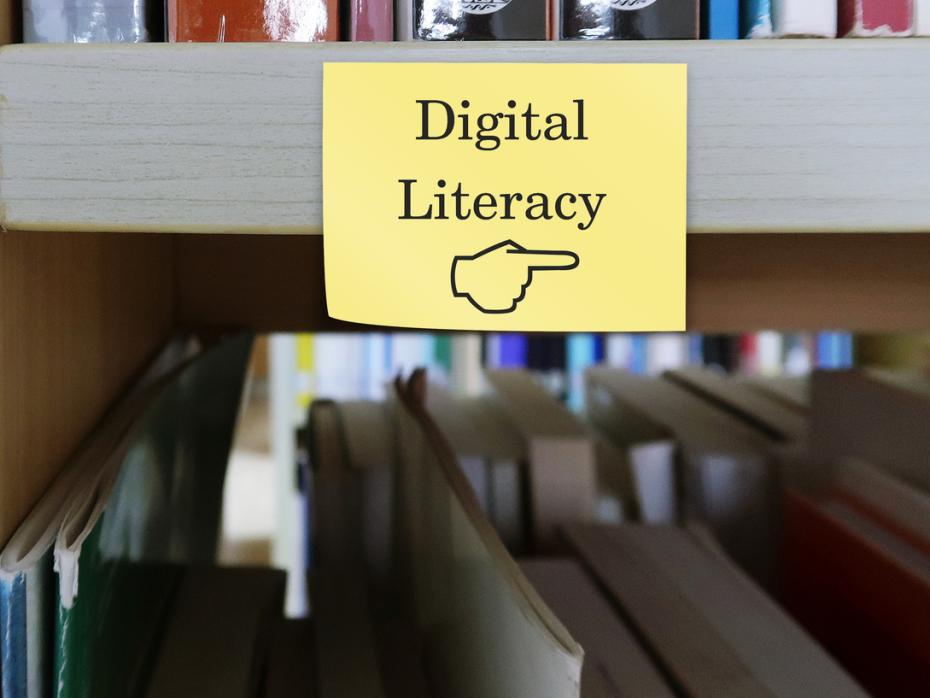
Closing the digital divide in higher education
A one-size-fits-all approach to digital literacy training simply won’t cut it; institutions need to tailor programmes to the varying needs of their staff

You may also like
Popular resources
The digital revolution has swept across every aspect of our lives, and education is no different. Today’s universities operate in a rapidly changing technological landscape where faculty proficiency in digital tools is no longer a luxury but a necessity. Equipping educators with the skills to harness technology's power is crucial for creating engaging learning experiences and preparing students for success in a digital world.
However, a significant challenge stands in the way: the digital divide. This refers to the disparity between those who have access to technology and the skills to use it effectively, and those who don’t. In the context of higher education, this translates to faculty members with varying levels of digital comfort and diverse needs based on their disciplines. A one-size-fits-all approach to digital literacy training simply won’t cut it.
- Resources for higher education professionals on digital transformation
- Resource collection: Ideas that shape digital universities
- Ideas that make a difference for the digital transformation of universities
Tailoring the approach
Woxsen’s digital literacy programme recognises that a successful approach must cater to the individual needs and learning styles of its faculty members. Here’s how to achieve this:
Digital fluency surveys: conduct thorough assessments to understand faculty members’ existing skill sets, preferred learning styles, and any specific technological challenges they face. This can be done through one-on-one consultations or focus groups. Ask questions related to preferred learning styles, existing skill sets, technological challenges and others as part of the survey, including:
How do you prefer to learn new technologies?
- Through hands-on practice
- By watching tutorials or demonstrations
- By reading written instructions
- By attending workshops or training sessions
What do you find most helpful when learning new technologies?
- Clear and concise instructions
- Examples and case studies
- Opportunities to practise and experiment
- Feedback and support from others
Do you have any preferences for the format of technology training sessions?
Brown bag sessions: leverage the informal setting of brown bag lunches, informal meals where individuals bring their own food from home to eat at work or another location, to introduce new technologies, share best practices and encourage faculty discussions. Experts or faculty members with advanced digital skills can lead these sessions, fostering peer learning and knowledge exchange.
Differentiated training programmes and flexible learning options: Woxsen understands that faculty members juggle competing demands on their time. To address this, our programme offers a variety of flexible learning options. This includes online courses, in-person workshops, self-paced learning modules and micro-credentials.
By offering a variety of learning formats, faculty may choose the approach that best aligns with their individual needs and schedules. This flexibility fosters a sense of ownership over the learning process and increases the likelihood of successful skill development.
Fostering a culture of experimentation and continuous learning
Institutions must cultivate a supportive environment that encourages faculty to experiment, collaborate and embrace continuous learning. To do this:
- Provide dedicated “digital sandbox” spaces, safe spaces such as labs, online communities and workshops for faculty to explore new technologies. Faculty can explore and experiment with tools, discover potential applications and share experiences with colleagues. This fosters a spirit of innovation and helps overcome anxieties associated with new technologies.
- Facilitate peer-to-peer mentorship programmes to leverage the expertise of digitally adept faculty. Mentees benefit from personalised tips and troubleshooting assistance, while mentors gain valuable leadership experience.
- Gamification and AI-powered learning: at Woxsen, we have developed an app called EverLearn, which assists faculty in learning and understanding the tools better. Transforming training into a game can make learning enjoyable and interactive. We do this by setting “digital literacy quests” where faculty members earn points for completing training modules, participating in online discussions or attending workshops.
Measuring digital literacy: beyond the checkbox
Evaluating the effectiveness of digital literacy initiatives goes beyond simply measuring completion rates of training modules. Consider a multifaceted approach that takes into account:
Integration of technology in teaching: observing how effectively faculty integrate technology into their courses to promote deeper learning. To measure technology effectiveness, observe classroom use, interview faculty, analyse course materials, assess student learning and track technology usage data. Use rubrics to evaluate factors such as relevance, frequency, student engagement and alignment with learning objectives.
Student engagement: assessing student feedback on the impact of lecturers’ technology use on their learning experience
Innovation and experimentation: encouraging faculty to pilot new digital tools and share their experiences, fostering a culture of continuous improvement.
Looking ahead: the future of digital literacy in higher education
Here are some key considerations for the future of digital literacy programmes:
Partnerships with technology leaders: universities can partner with technology companies to offer faculty early access to emerging tools and training on their latest features. This allows faculty to stay ahead of the curve and experiment with cutting-edge technologies before they become mainstream.
Focus on AI: with AI rapidly transforming the educational landscape, faculty development programmes should equip educators with the skills to leverage AI ethically. This might involve training on using AI-powered learning analytics to personalise student learning or exploring the potential of AI chatbots for student support.
Metrics for adaptability: while measuring specific technical skills is important, universities can also develop metrics to assess faculty adaptability. This might involve tracking faculty participation in experimentation initiatives, their willingness to embrace new technologies and their ability to integrate them into their teaching practices.
An effective digital literacy programme bridges the digital divide and empowers faculty with the skills to thrive in a technology-driven world. By employing a needs-based, flexible and collaborative approach, Woxsen fosters a culture of digital fluency that ultimately translates into enhanced student learning experiences and improved student outcomes.
Pavana Kiranmai Chepuri is head of strategic initiatives and growth at Woxsen University.
If you would like advice and insight from academics and university staff delivered direct to your inbox each week, sign up for the Campus newsletter.



Comments (0)
or in order to add a comment